(a) A 10-kg block is supported by cord that runs to a spring scale, which is supported by another cord from the ceiling as shown in fig. What is the reading on the scale?
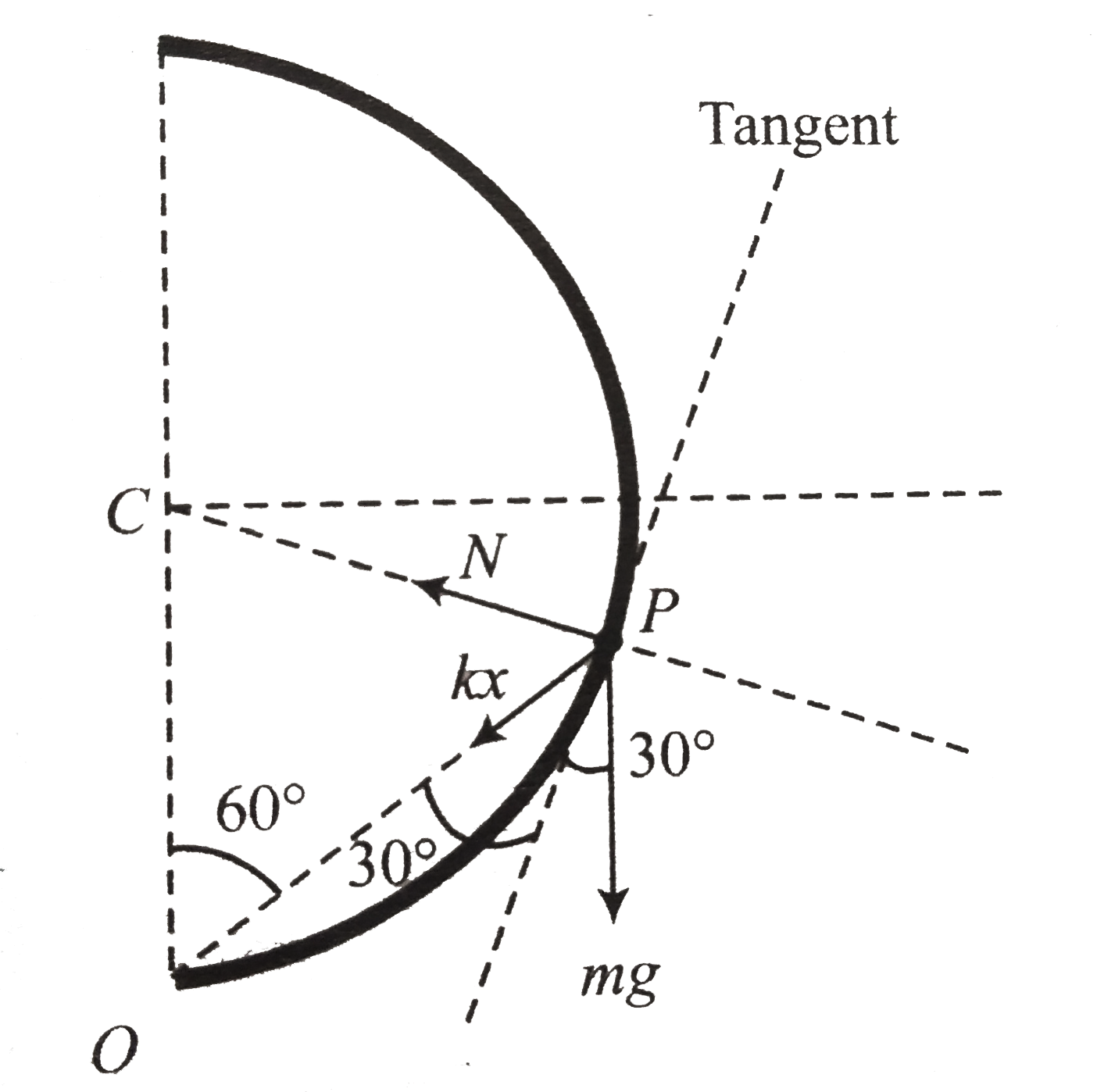
(b) In Fig. the block is supported by a cord that runs around a pulley and to a scale. The opposite end of the scale is attached by a cord to a wall. What is the reading of the scale?
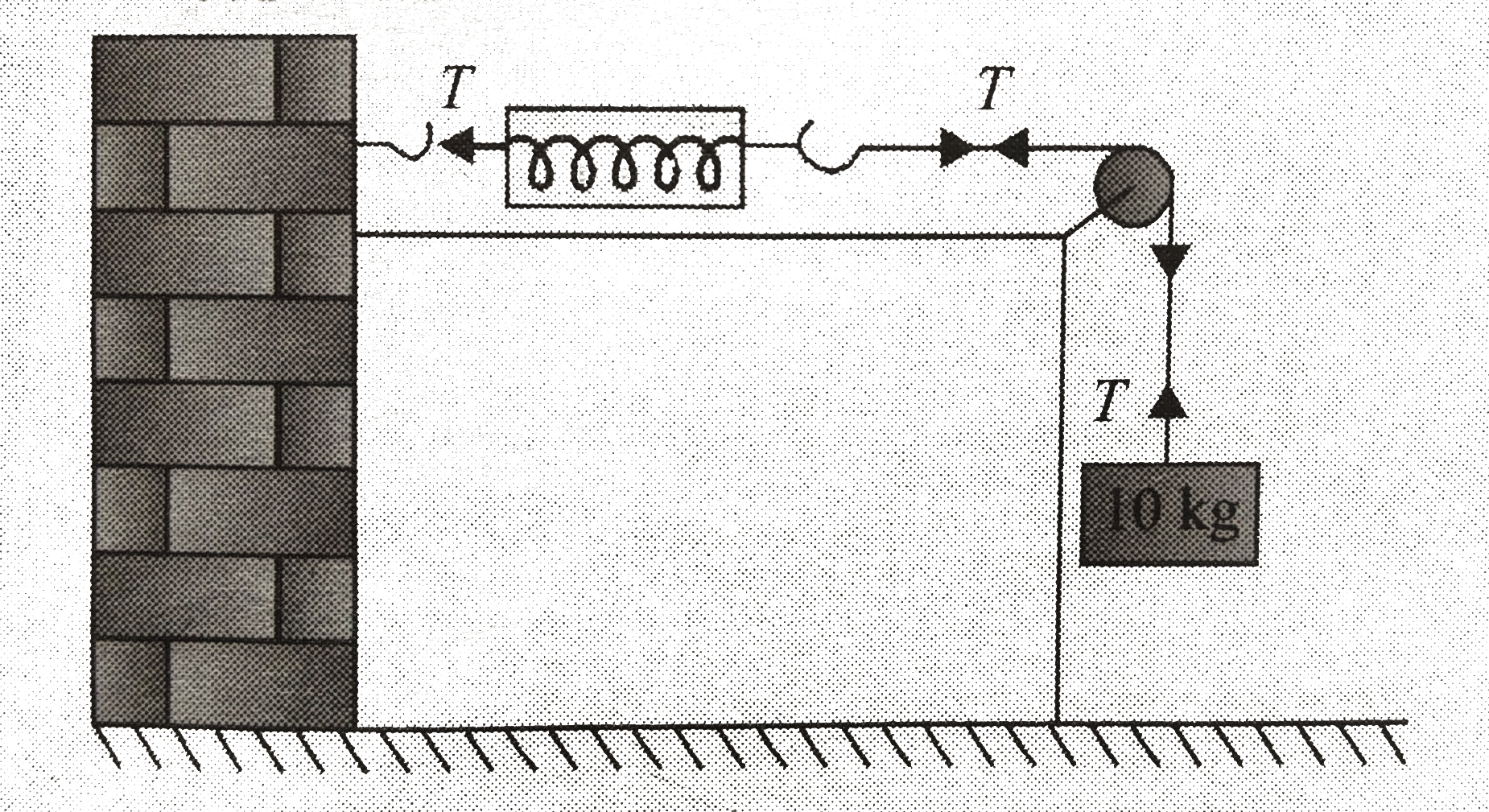
(c ) In fig. the wall has been replaced with a second 10-kg block, what is the reading on the scale now?
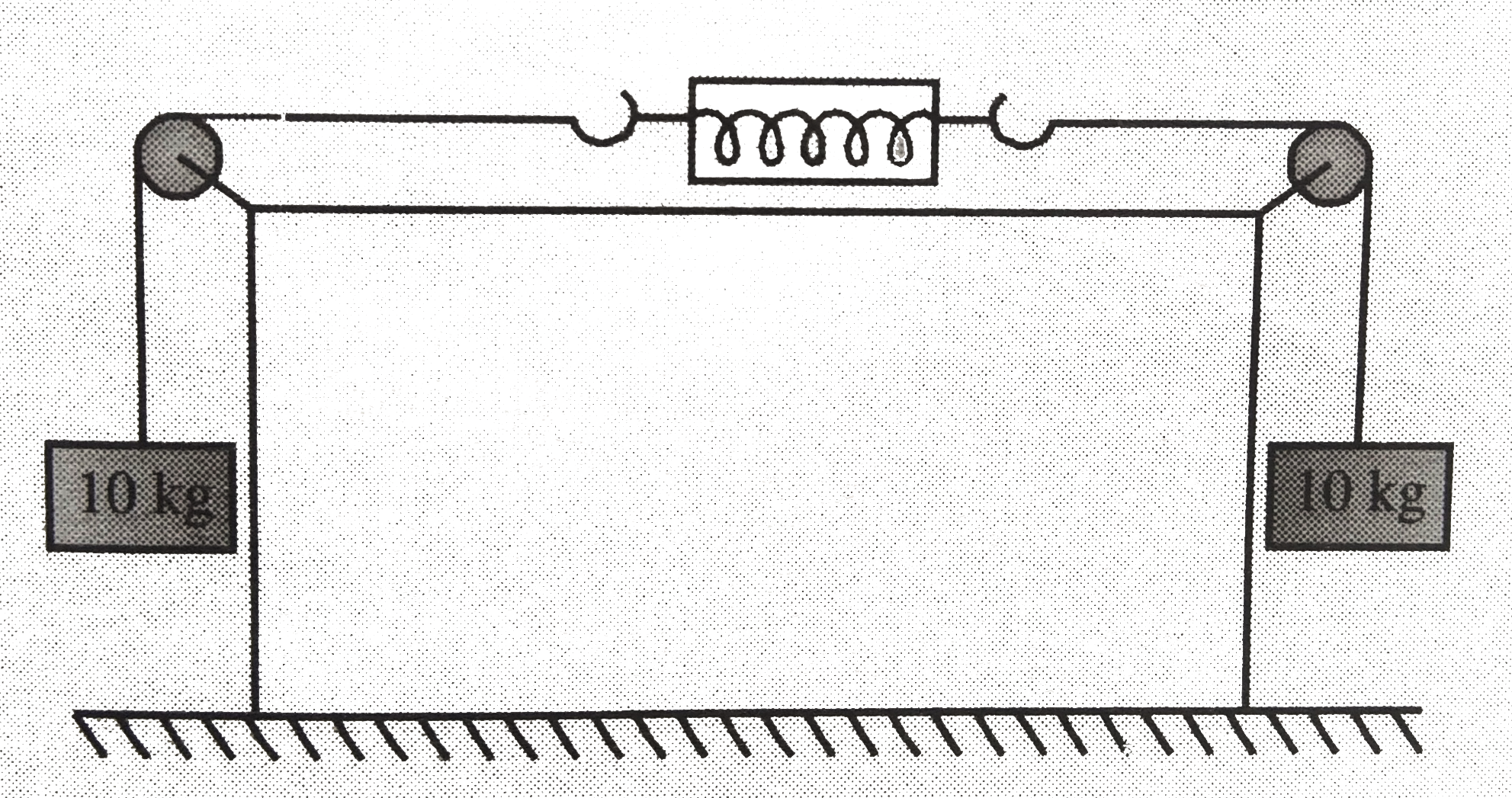 .
.
In all the three cases the spring balance reads 10 kg.
Let us cut a section inside the spring as shown in fig
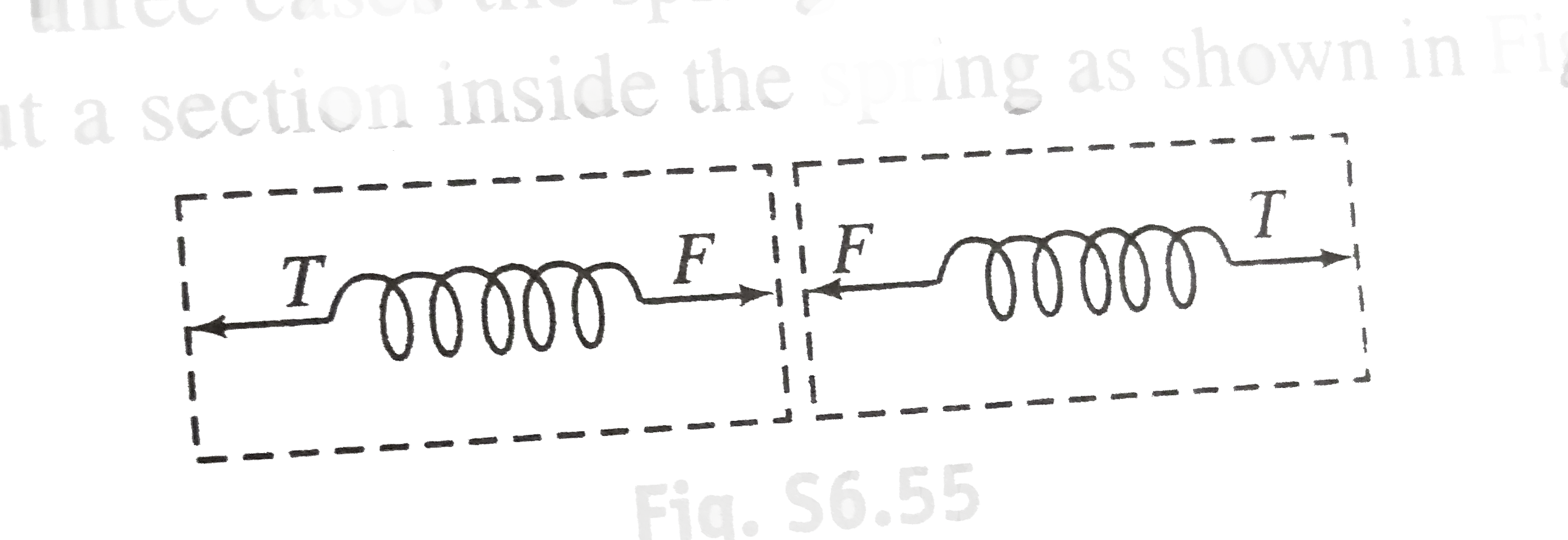
As each part of the spring is at rest , so F=T. As the block is stationary, so T=F=100N.
Topper's Solved these Questions
- NEWTON'S LAWS OF MOTION 1BOOK - CENGAGE PHYSICSCHAPTER - NEWTON'S LAWS OF MOTION 1EXERCISE - Subjective
15 Videos
- NEWTON'S LAWS OF MOTION 1BOOK - CENGAGE PHYSICSCHAPTER - NEWTON'S LAWS OF MOTION 1EXERCISE - Single Correct
76 Videos
- NEWTON'S LAWS OF MOTION 1BOOK - CENGAGE PHYSICSCHAPTER - NEWTON'S LAWS OF MOTION 1EXERCISE - Exercise 6.3
19 Videos
- MISCELLANEOUS VOLUME 2BOOK - CENGAGE PHYSICSCHAPTER - MISCELLANEOUS VOLUME 2EXERCISE - INTEGER_TYPE
10 Videos
- NEWTON'S LAWS OF MOTION 2BOOK - CENGAGE PHYSICSCHAPTER - NEWTON'S LAWS OF MOTION 2EXERCISE - Integer type
1 Videos
Similar Questions
(a) An 11.0 kg salami is supported by a cord that runs to a spring scale, which is supported by a cord hung from the ceiling (Fig. 5-41a). What is the reading on the scale, which is marked in SI weight units? (This is a way to measure weight by a cord that runs around a pulley and to a scale.The opposite end of the scale? (This is the way by a physics major.) ( c ) In Fig. 5-41c the wall has been replaced with a second 11.0 kg salami, and the assembly is stationary. What is the reading on the scale? (This is the way by a deli owner who was once a physics major.)
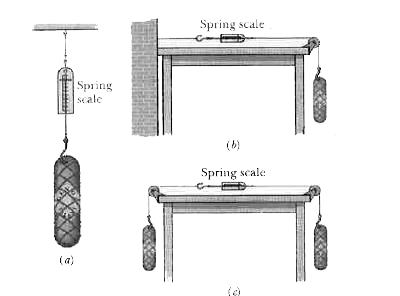
View SolutionTwo 2 kg weight are attached to spring balance as shown in figure-2.122. What is the reading of the scale ?
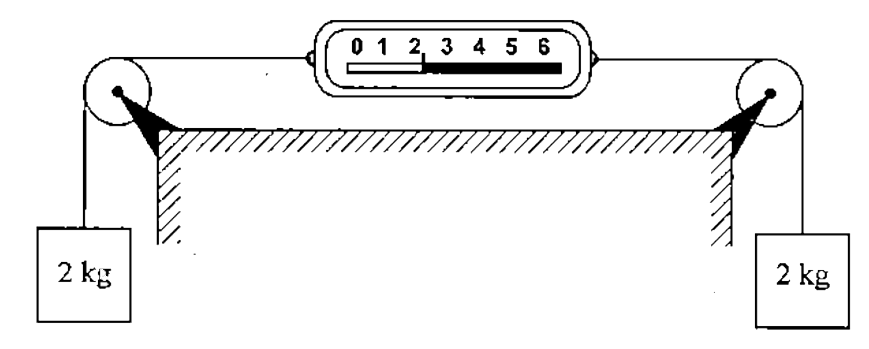
View Solution
Knowledge Check
A heavy block of mass m is supported by a cord C attached to the ceiling, and another cord D is attached to the bottom of the block. If a sudden jerk is given to D, then
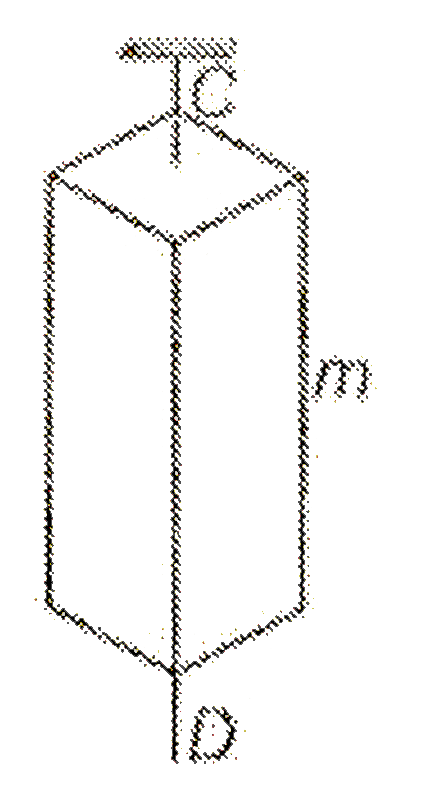 Acord C breaksBcord D breaksCcord C and D both BreakDNone of the cords breaks
Acord C breaksBcord D breaksCcord C and D both BreakDNone of the cords breaksTwo blocks are connected by a cord passing over a small frictionless pulley and resting on frictionless planes as shown in the figure The accleration of the blocks is-
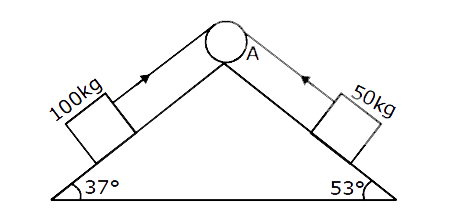 A0.33 m/s2B0.66 m/s2C1 m/s2D1.32 m/s2
A0.33 m/s2B0.66 m/s2C1 m/s2D1.32 m/s2
A heavy block of mass m is supported by a cord C attached to the ceiling, and another cord D is attached to the bottom of the block. If a sudden jerk is given to D, then

View SolutionTwo blocks are connected by a cord passing over a small frictionless pulley and resting on frictionless planes as shown in the figure. The acceleration of the blocks is :
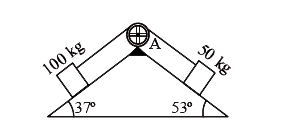
View SolutionTwo blocks are connected by a cord passing over a small frictionless pulley and resting on frictionless planes as shown in the figure. The acceleration of the blocks is :

View SolutionA block of mass M is supported by a cord C from a rigid support, and another cord D is attached to the bottom of the block. If D is given a sudden jerk D breaks But if D is pulled steadily, cord C breaks. Why ?
View SolutionA uniform board of mass M and length L rests on two spring scales. A person of mass m stands at a distance l from one end as shown in Fig. (a) The board and person are at rest. What is the reading of the two scales?
View SolutionA 16 kg block is attached to a cord that is wrapped around the rim of a flywheel of diameter 0.4 m and hangs vertically, as shown in figure. The rotational inertia of the flywheel is 0.5 kg m2. When the block is released and the cord unwinds, the acceleration of the block is

View Solution
